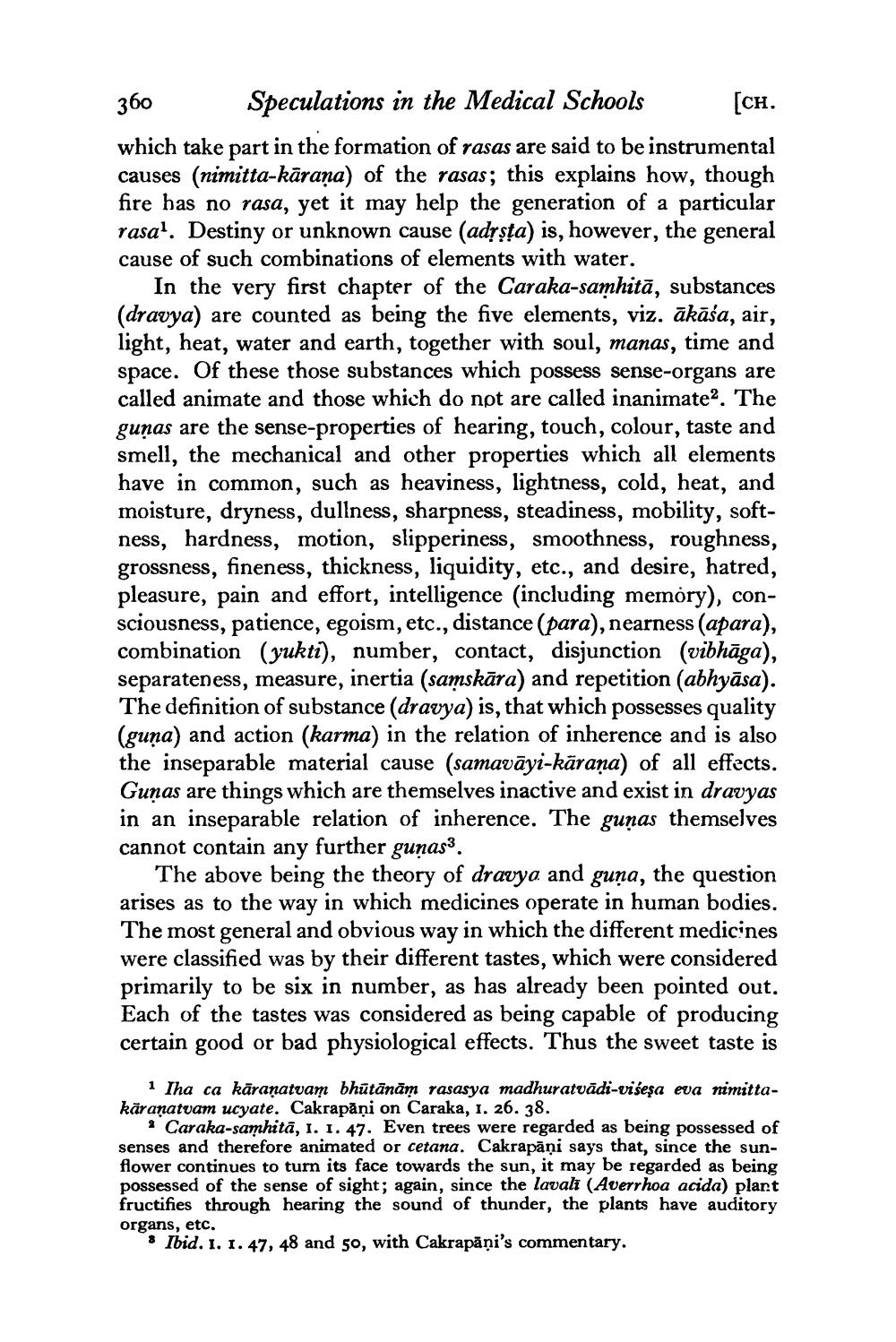________________
360
Speculations in the Medical Schools
[CH.
which take part in the formation of rasas are said to be instrumental causes (nimitta-kāraṇa) of the rasas; this explains how, though fire has no rasa, yet it may help the generation of a particular rasa1. Destiny or unknown cause (adṛṣṭa) is, however, the general cause of such combinations of elements with water.
In the very first chapter of the Caraka-samhitā, substances (dravya) are counted as being the five elements, viz. ākāśa, air, light, heat, water and earth, together with soul, manas, time and space. Of these those substances which possess sense-organs are called animate and those which do not are called inanimate2. The gunas are the sense-properties of hearing, touch, colour, taste and smell, the mechanical and other properties which all elements have in common, such as heaviness, lightness, cold, heat, and moisture, dryness, dullness, sharpness, steadiness, mobility, softness, hardness, motion, slipperiness, smoothness, roughness, grossness, fineness, thickness, liquidity, etc., and desire, hatred, pleasure, pain and effort, intelligence (including memory), consciousness, patience, egoism, etc., distance (para), nearness (apara), combination (yukti), number, contact, disjunction (vibhāga), separateness, measure, inertia (samskāra) and repetition (abhyāsa). The definition of substance (dravya) is, that which possesses quality (guna) and action (karma) in the relation of inherence and is also the inseparable material cause (samavāyi-kāraṇa) of all effects. Gunas are things which are themselves inactive and exist in dravyas in an inseparable relation of inherence. The gunas themselves cannot contain any further gunas3.
The above being the theory of dravya and guna, the question arises as to the way in which medicines operate in human bodies. The most general and obvious way in which the different medicines were classified was by their different tastes, which were considered primarily to be six in number, as has already been pointed out. Each of the tastes was considered as being capable of producing certain good or bad physiological effects. Thus the sweet taste is
1 Iha ca kāraṇatvam bhūtānām rasasya madhuratvādi-viseşa eva nimittakāraṇatvam ucyate. Cakrapāņi on Caraka, 1. 26. 38.
Caraka-samhita, I. 1. 47. Even trees were regarded as being possessed of senses and therefore animated or cetana. Cakrapāņi says that, since the sunflower continues to turn its face towards the sun, it may be regarded as being possessed of the sense of sight; again, since the lavali (Averrhoa acida) plant fructifies through hearing the sound of thunder, the plants have auditory organs, etc.
Ibid. 1. 1. 47, 48 and 50, with Cakrapāņi's commentary.




